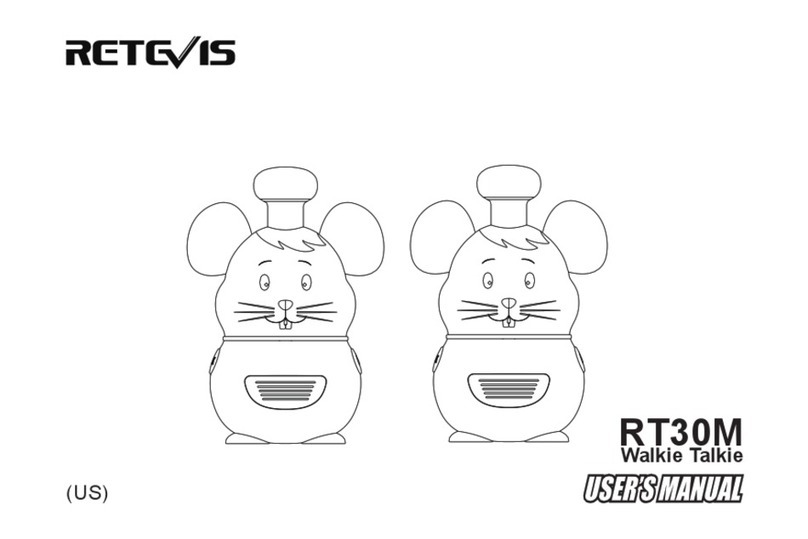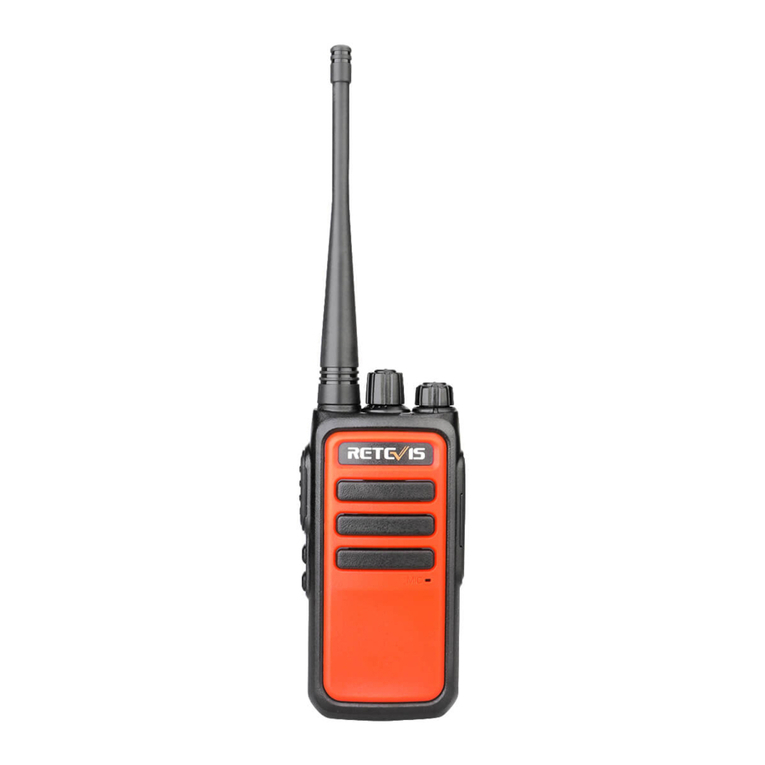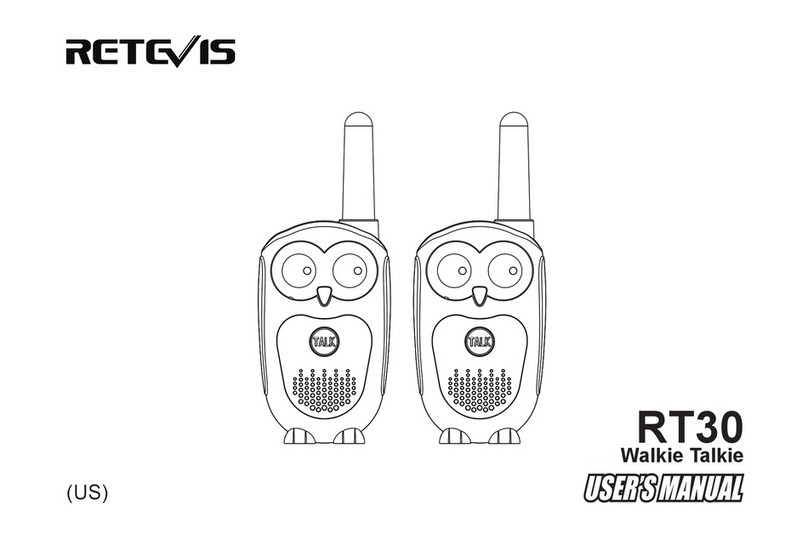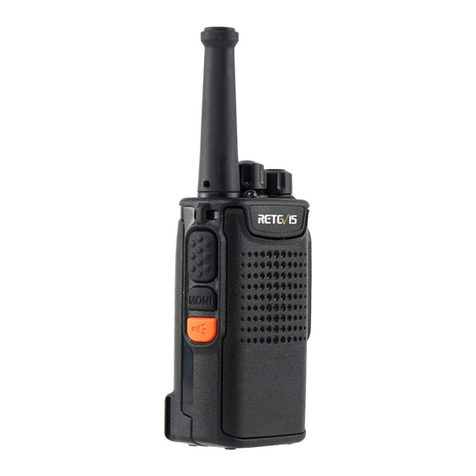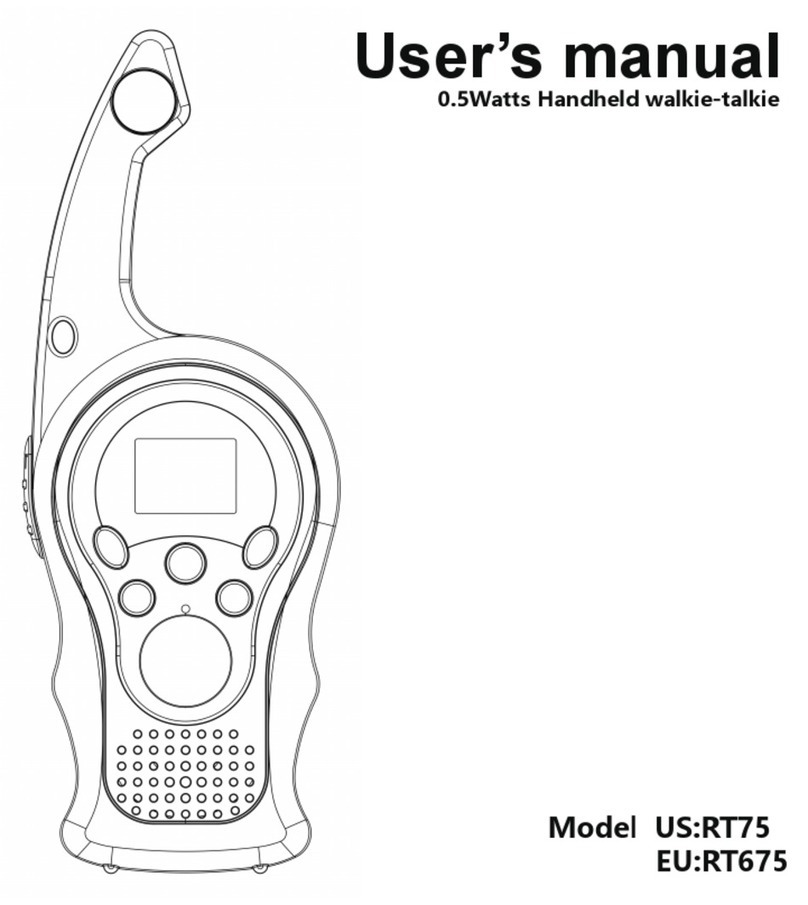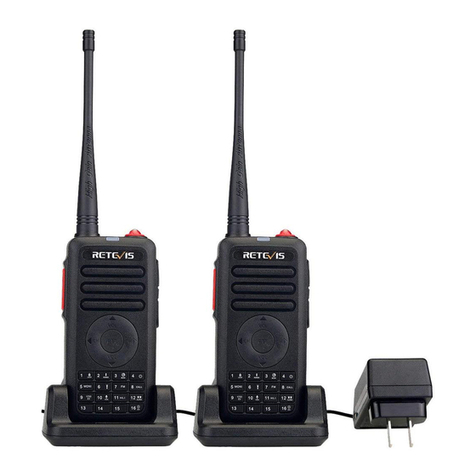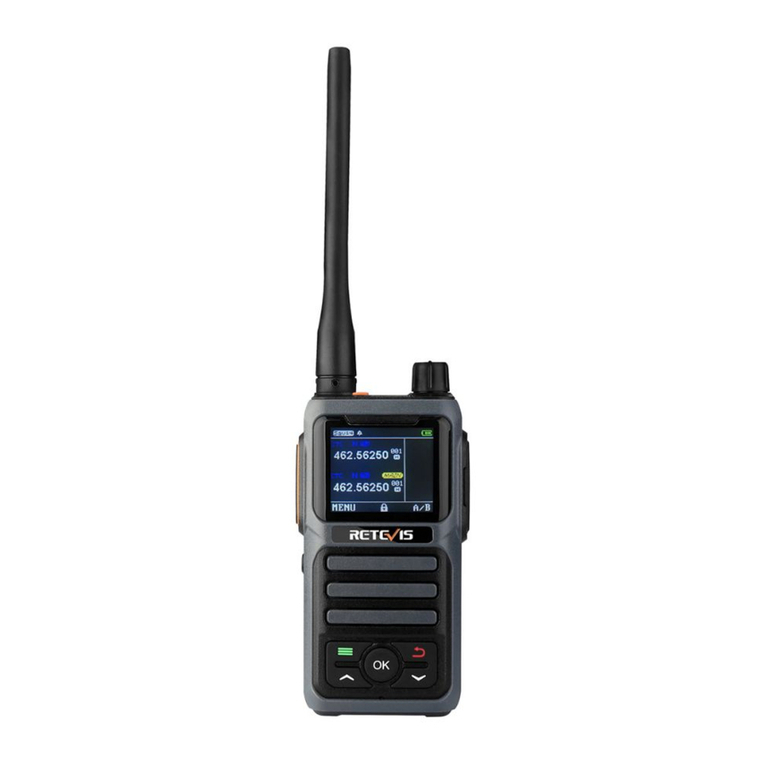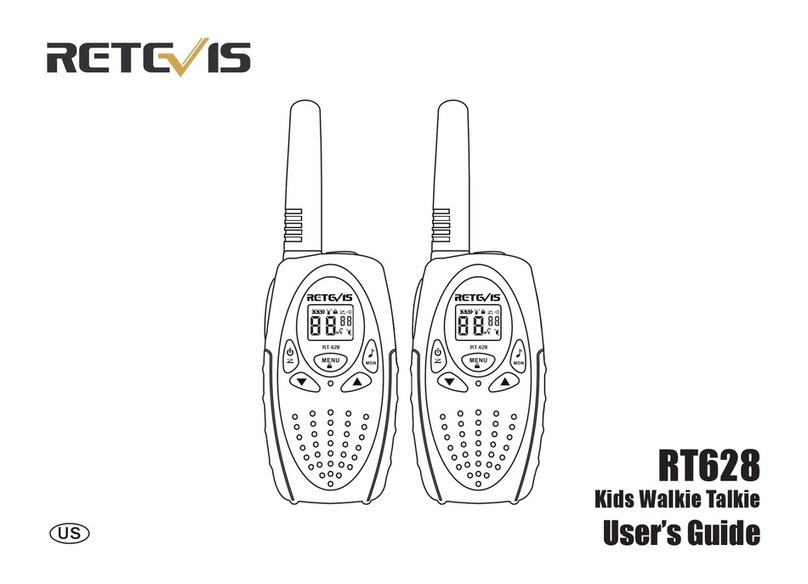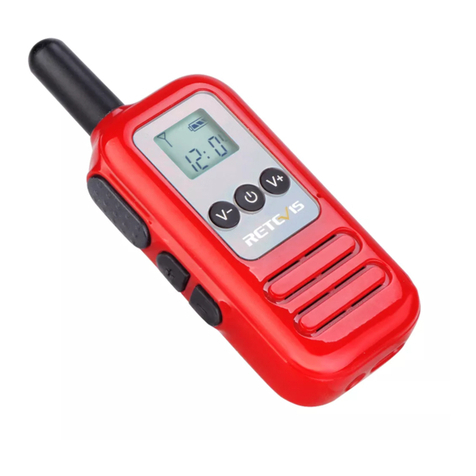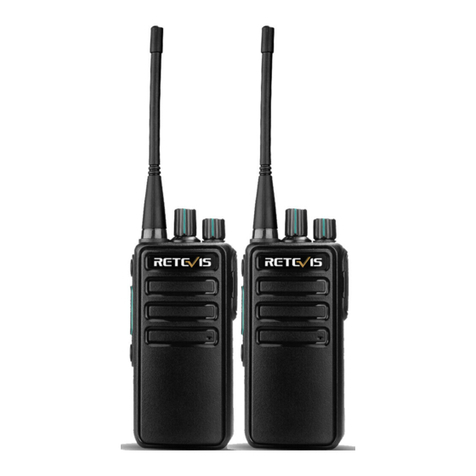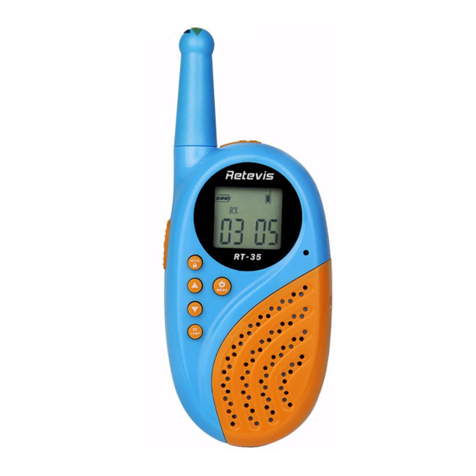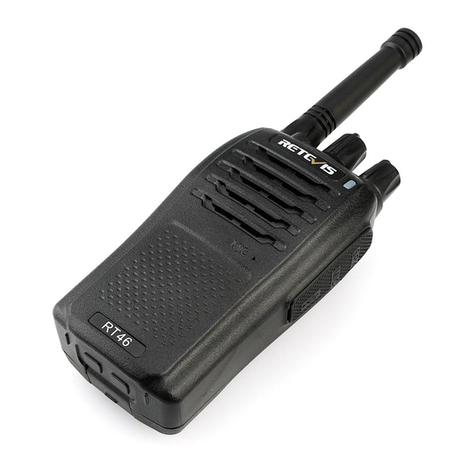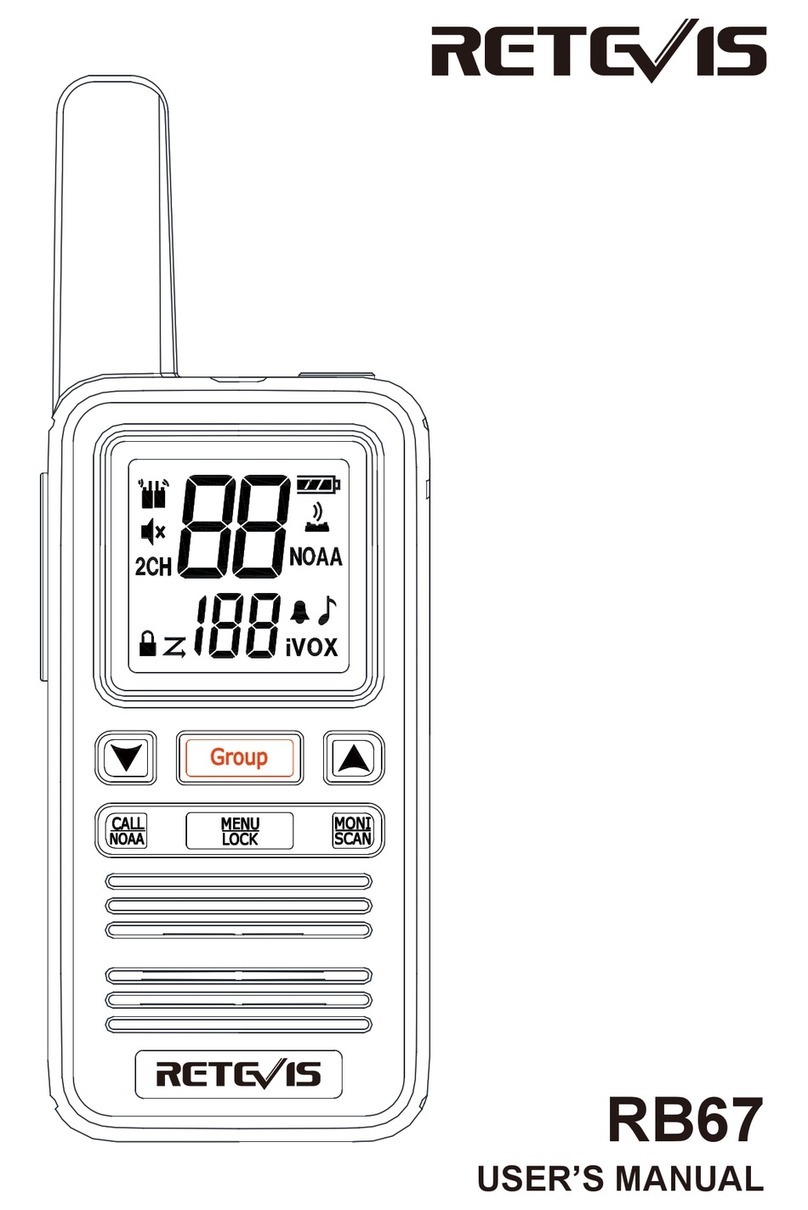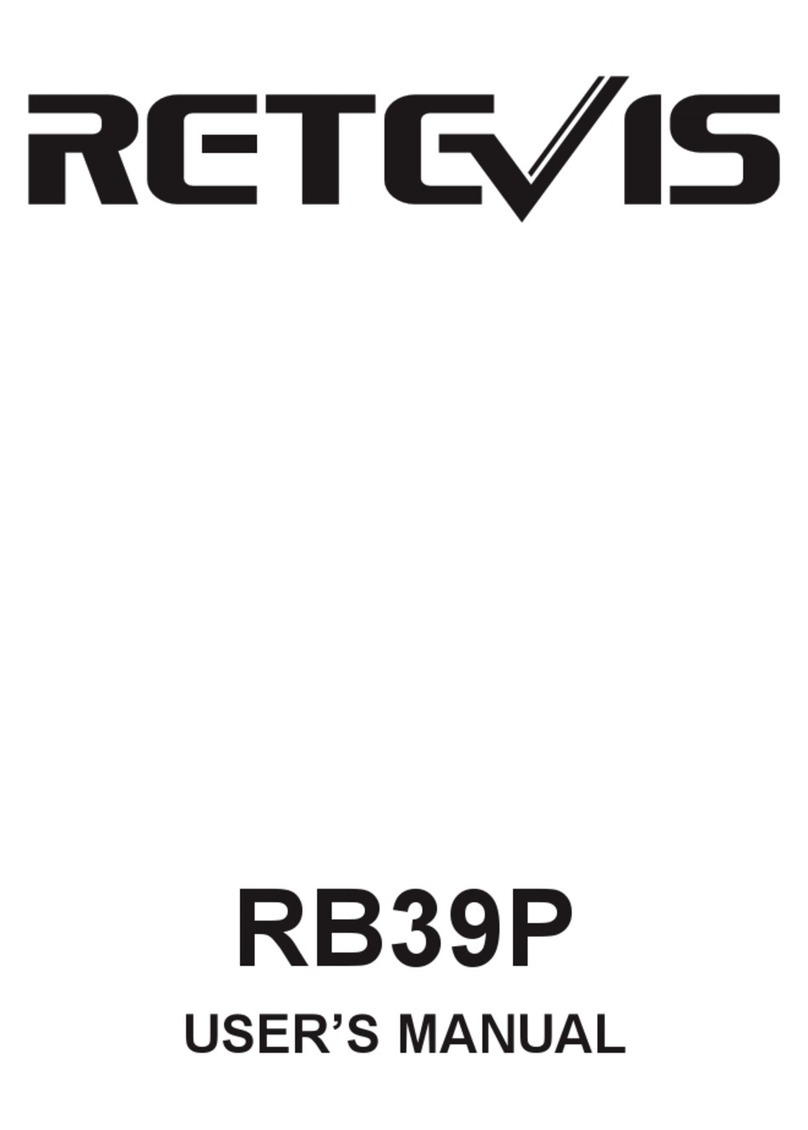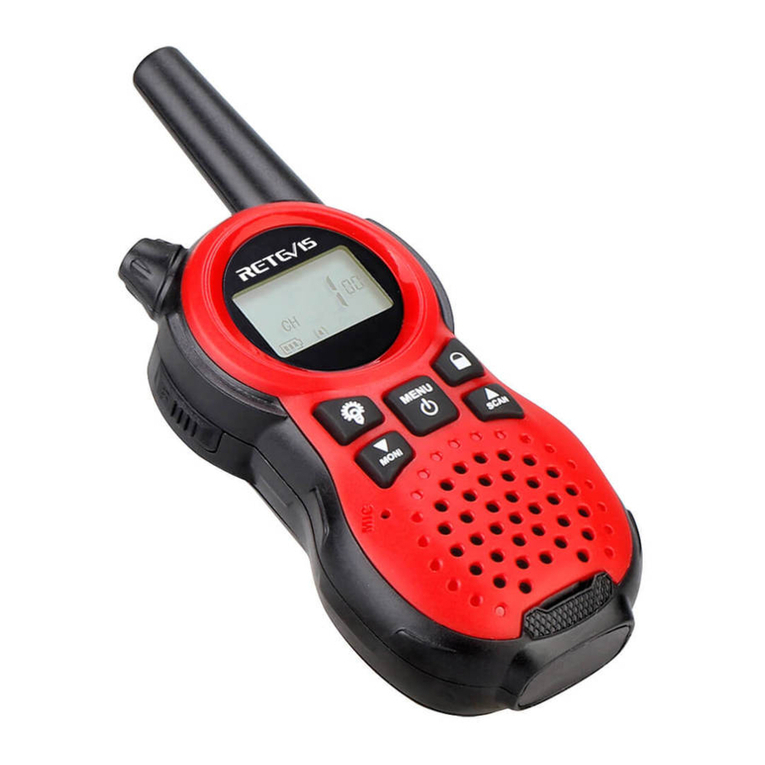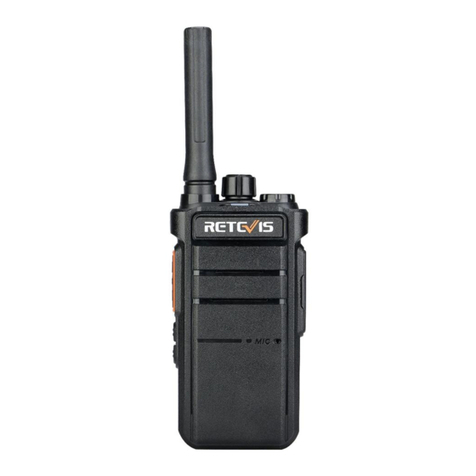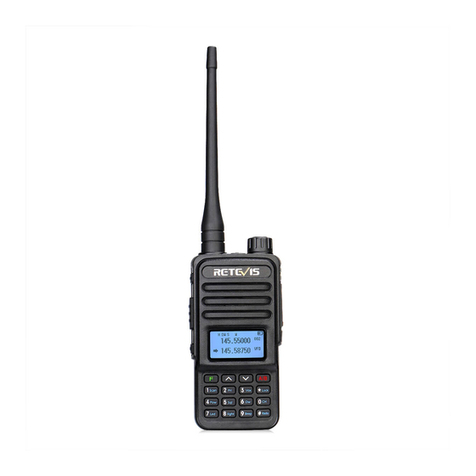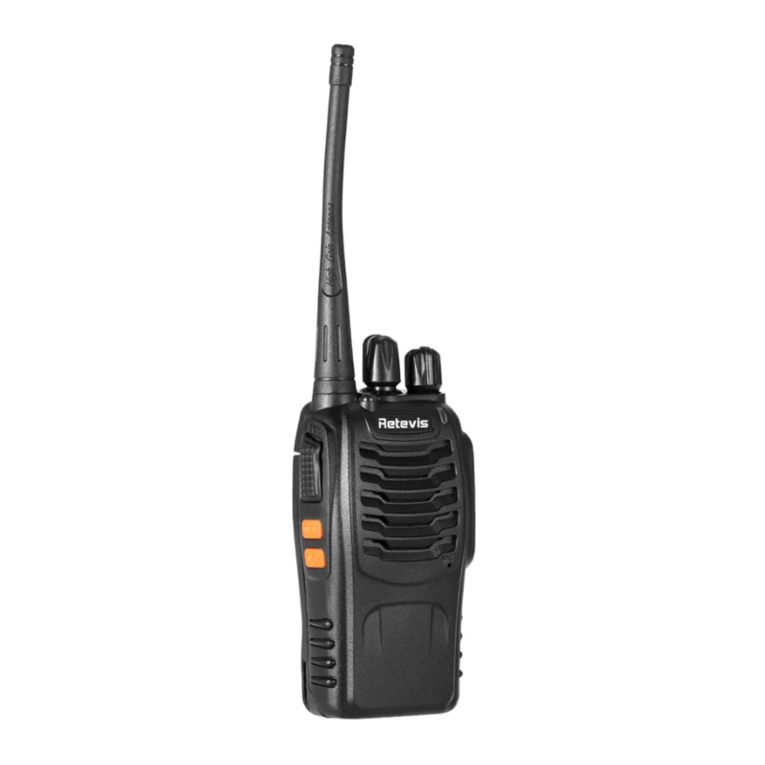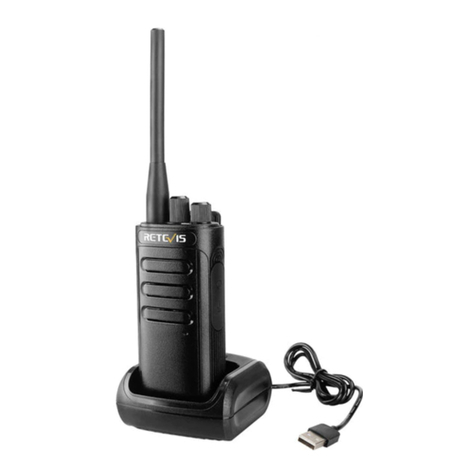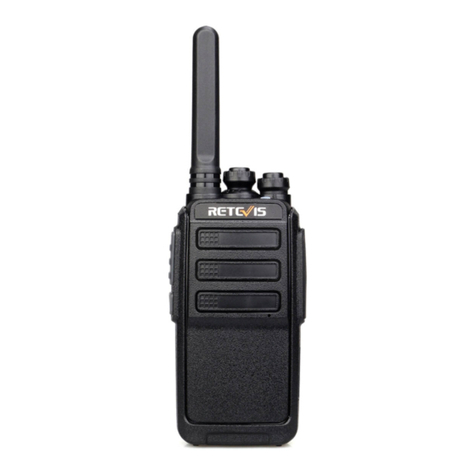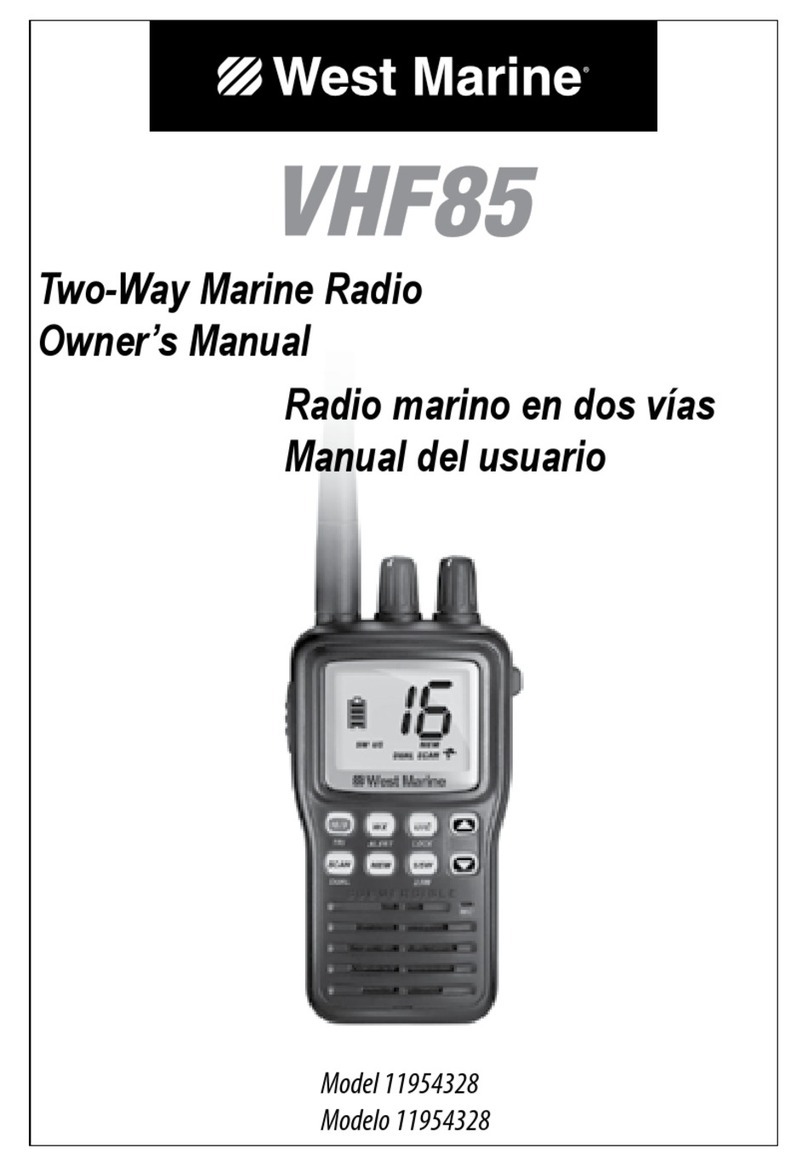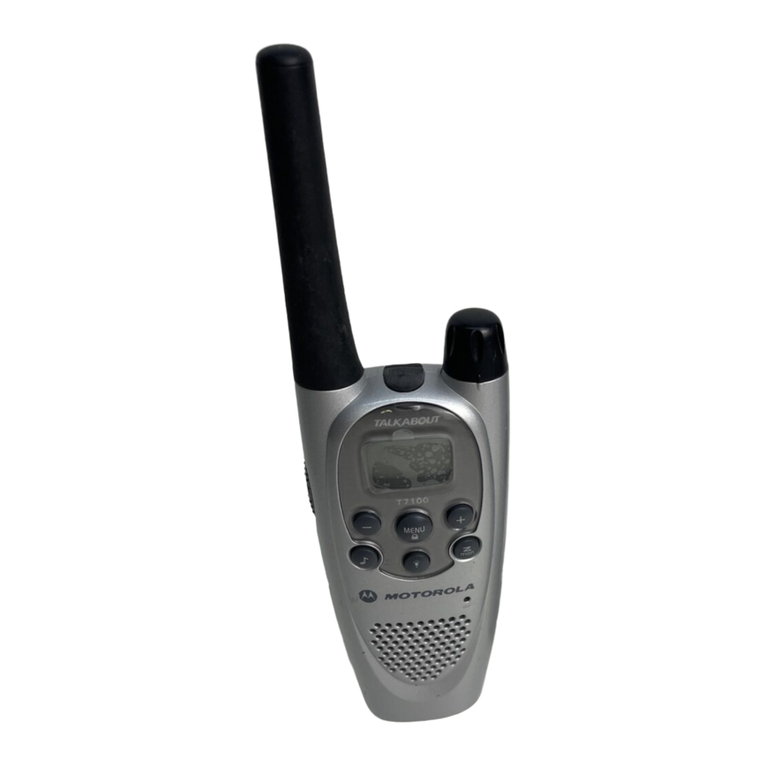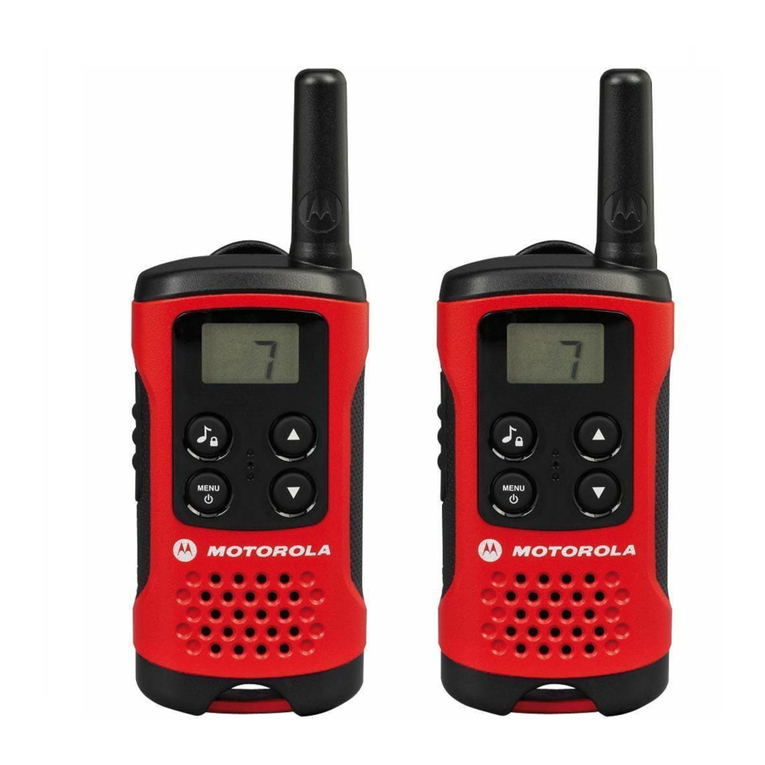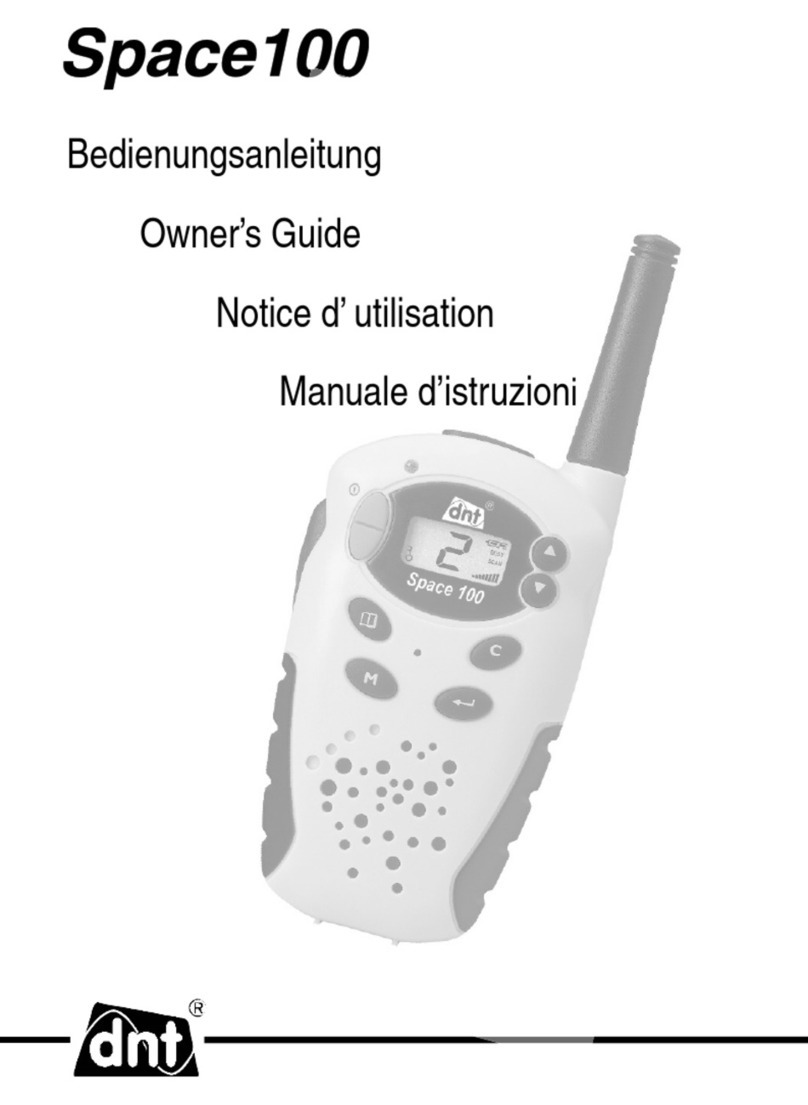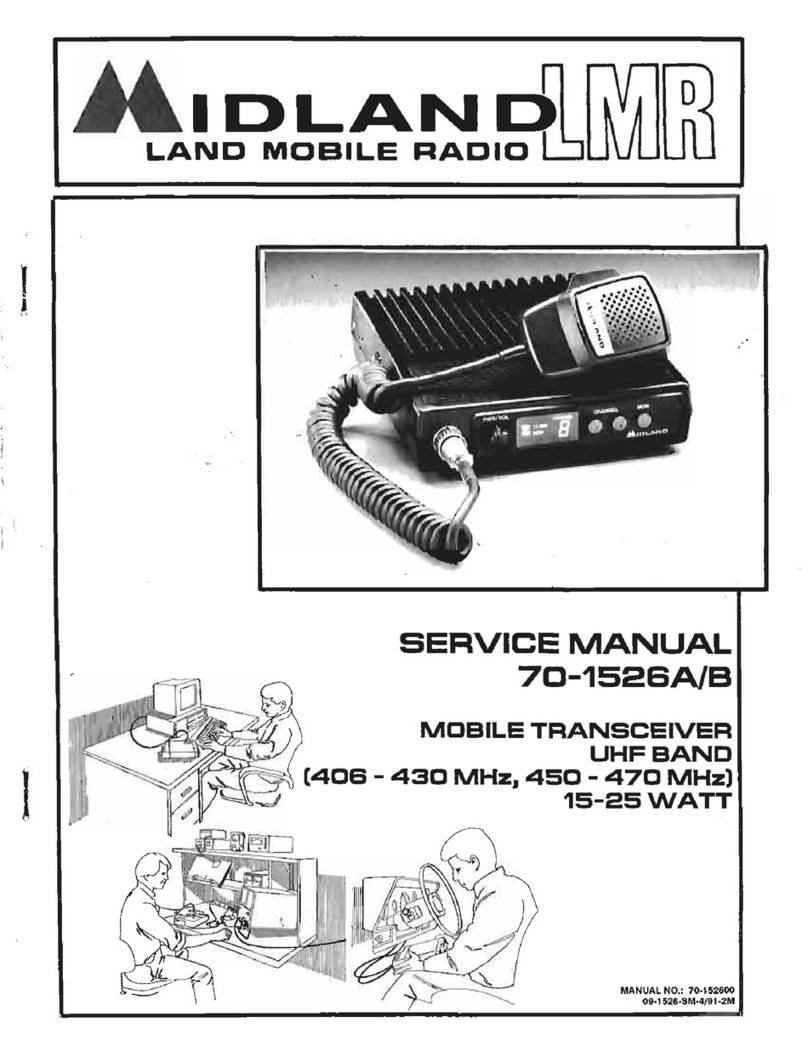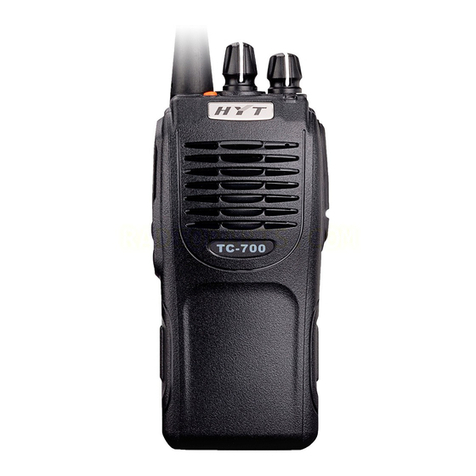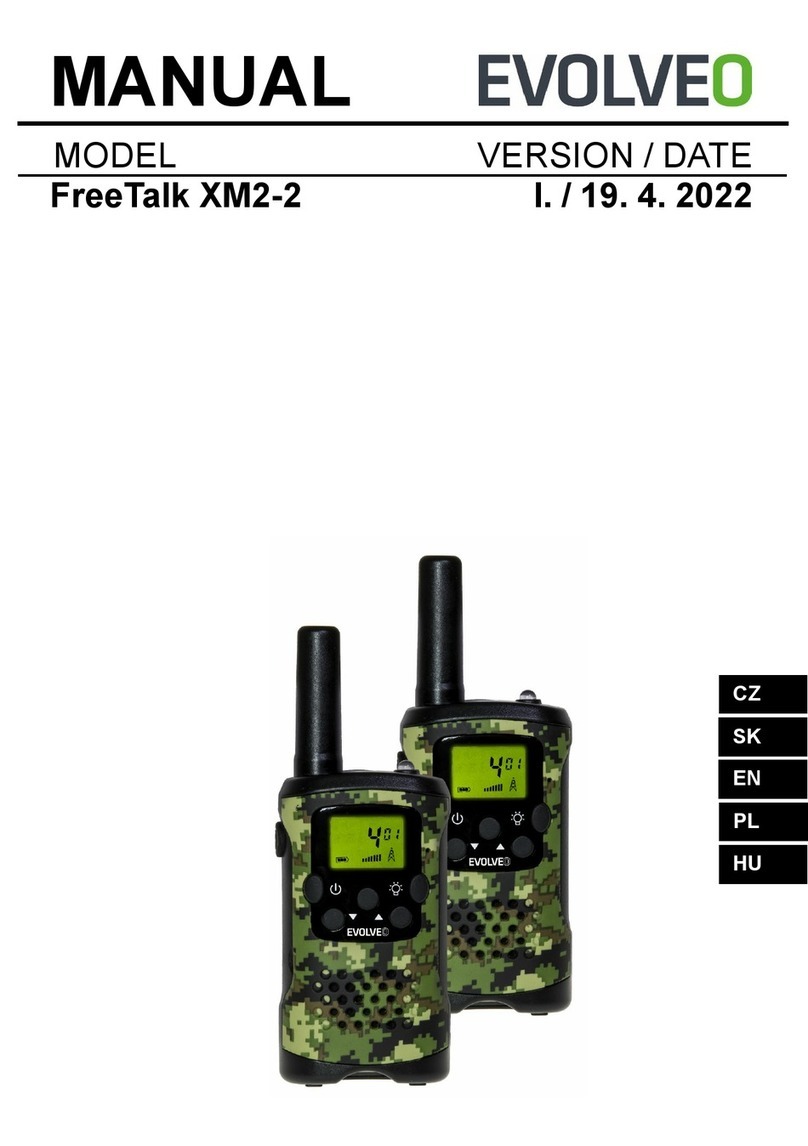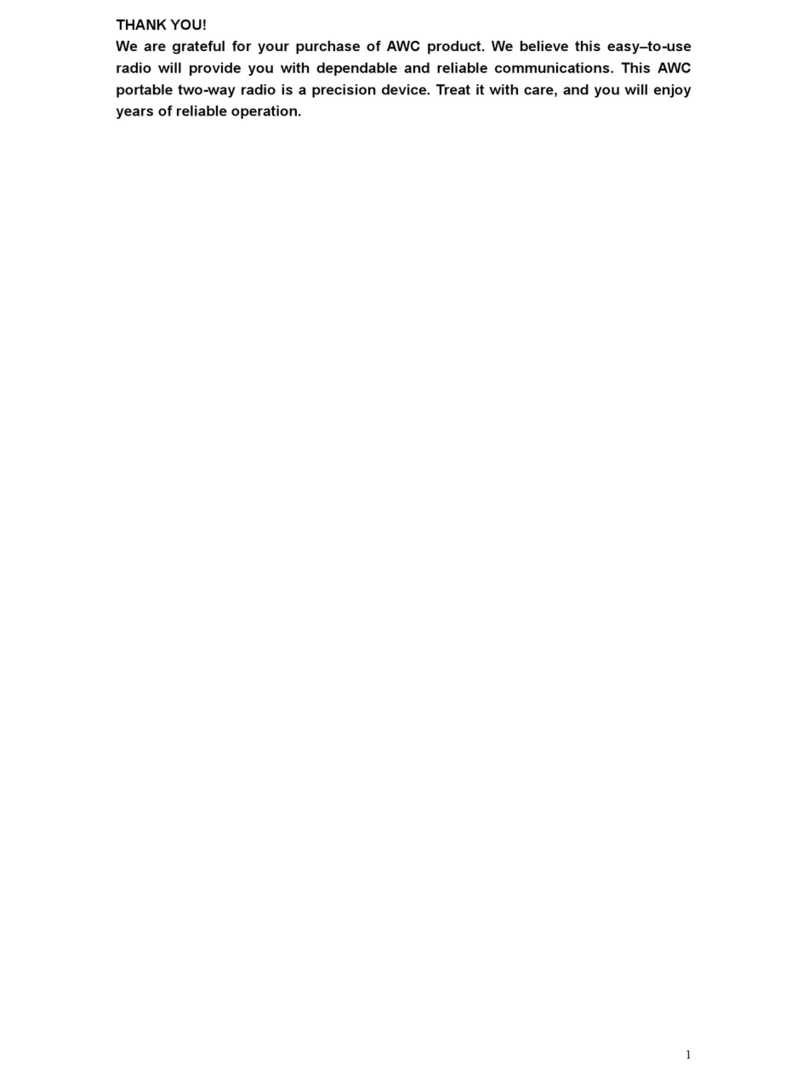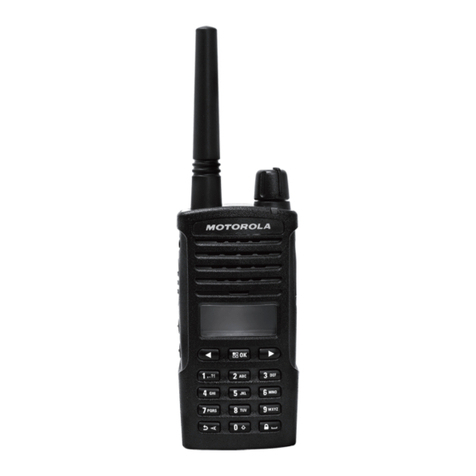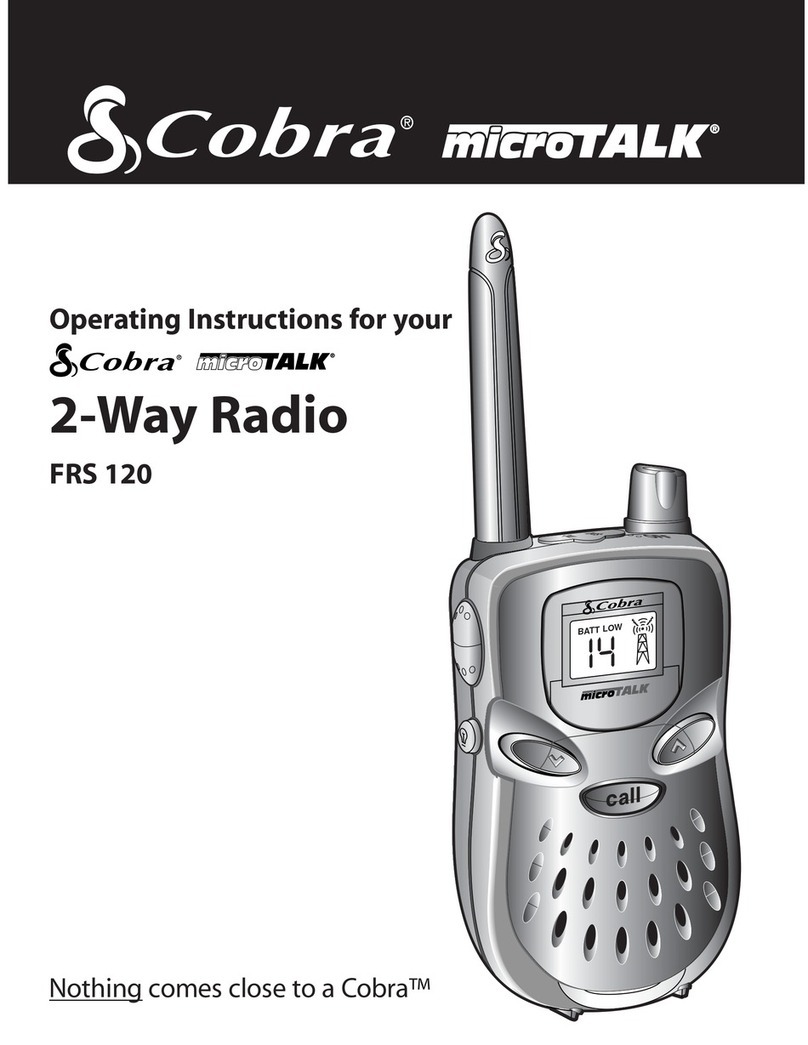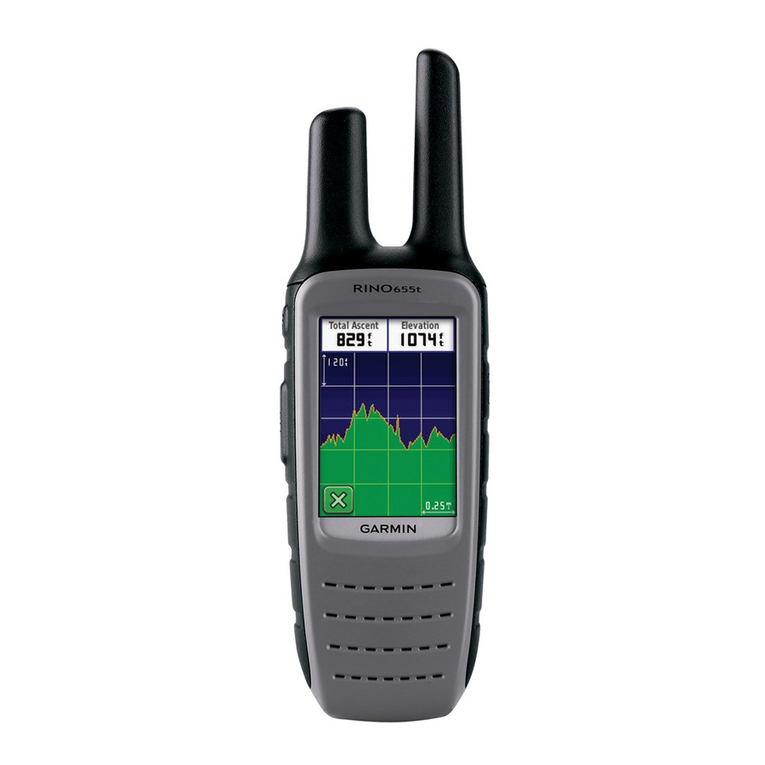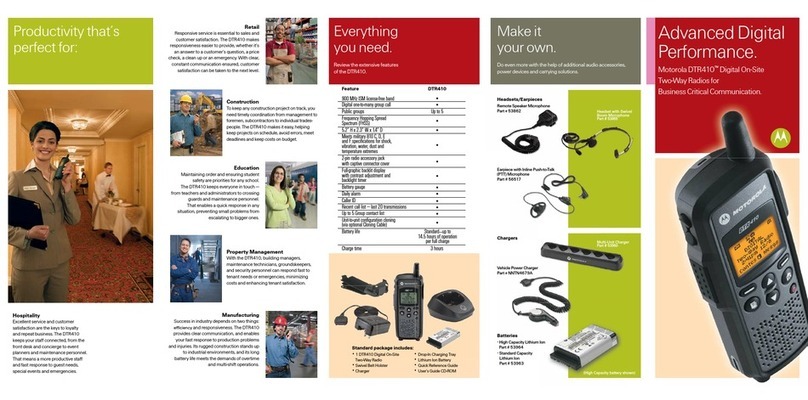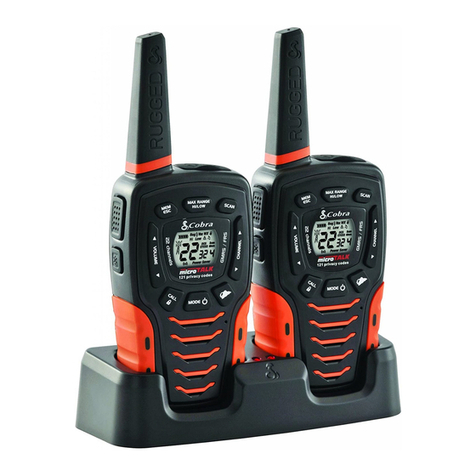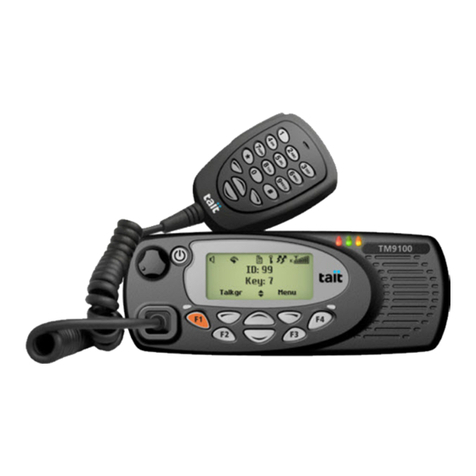
08
devices are applicable)
(1) This device may not cause harmful interference, and
(2) this device must accept any interference received, including interference that may cause undesired
operation.
(Only Applicable to GMRS radio station):
A valid individual license is required to operate a GMRS station. To obtain an individual license, an applicant
must be eligible and follow the applicable rules and procedures established by FCC. The applicant must pay
the required application and regulatory fees. Each individual license in the GMRS will normally have a term of
ten years from the date of grant or renewal, and may be renewed pursuant to the procedures of FCC. To obtain
a GMRS operator license, you need FCC Form 605 & 159, we suggest visiting the FCC website at
https://www.fcc.gov/wireless/support/fcc-form-605, which includes necessary instructions. More questions about
the license application, please contact the FCC at 1-888-225-5322 or go to the FCC's website:
http://www.fcc.gov.
According to FCC rules, any individual who holds an individual license may allow his or her immediate family
members to operate his or her GMRS station or stations. Immediate family members are the licensee's spouse,
children, grandchildren, stepchildren, parents, grandparents, stepparents, brothers, sisters, aunts, uncles,
nieces, nephews, and in-laws.
•(Only applicable to industrial environment)This equipment has been tested and found to comply with the limits
for a Class A digital device, pursuant to part 15 of the FCC Rules. These limits are designed to provide
reasonable protection against harmful interference when the equipment is operated in a commercial
environment. This equipment generates, uses, and can radiate radio frequency energy and, if not installed and
used in accordance with the instruction manual, may cause harmful interference to radio communications.
Operation of this equipment in a residential area is likely to cause harmful interference in which case the user
will be required to correct the interference at his own expense.
•(Only applicable to home)This equipment has been tested and found to comply with the limits for a Class B
digital device, pursuant to part 15 of the FCC Rules. These limits are designed to provide reasonable protection
against harmful interference in a residential installation. This equipment generates, uses and can radiate radio
frequency energy and, if not installed and used in accordance with the instructions, may cause harmful
interference to radio communications. However, there is no guarantee that interference will not occur in a
particular installation. If this equipment does cause harmful interference to radio or television reception, which
can be determined by turning the equipment off and on, the user is encouraged to try to correct the interference
by one or more of the following measures:
—Reorient or relocate the receiving antenna.
—Increase the separation between the equipment and receiver.
—Connect the equipment into an outlet on a circuit different from that to which the receiver is connected.
—Consult the dealer or an experienced radio/TV technician for help.
CE Requirements:
•(Simple EU declaration of conformity) Shenzhen Retevis Technology Co., Ltd. declares that the radio
equipment type is in compliance with the essential requirements and other relevant provisions of RED Directive
2014/53/EU and the ROHS Directive 2011/65/EU and the WEEE Directive 2012/19/EU; the full text of the EU
declaration of conformity is available at the following internet address: www.retevis.com.
•Restriction Information
This product can be used in EU countries and regions, including: Belgium (BE), Bulgaria (BG), Czech Republic
(CZ), Denmark (DK), Germany (DE), Estonia (EE), Ireland (IE), Greece (EL), Spain (ES), France (FR), Croatia
(HR), Italy (IT), Cyprus (CY), Latvia (LV), Lithuania (LT), Luxembourg (LU), Hungary (HU), Malta (MT),
Netherlands (NL), Austria (AT), Poland (PL), Portugal (PT), Romania (RO), Slovenia (SI), Slovakia (SK),
Finland (FI), Sweden (SE) and United Kingdom (UK).
For the warning information of the frequency restriction, please refer to the package.
•Disposal
The crossed-out wheeled-bin symbol on your product, literature, or packaging reminds you that in the European
